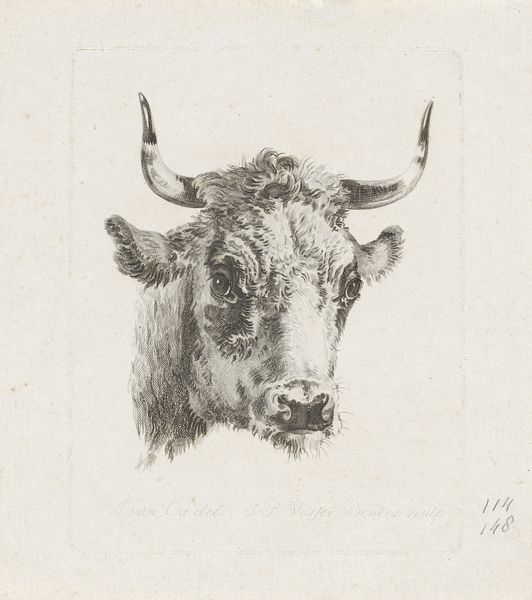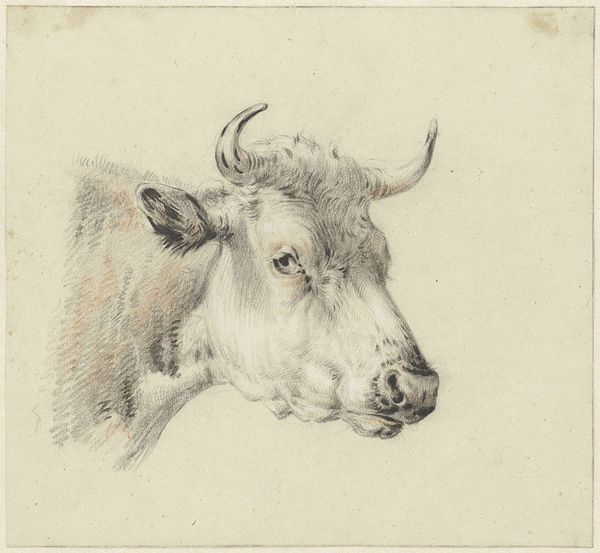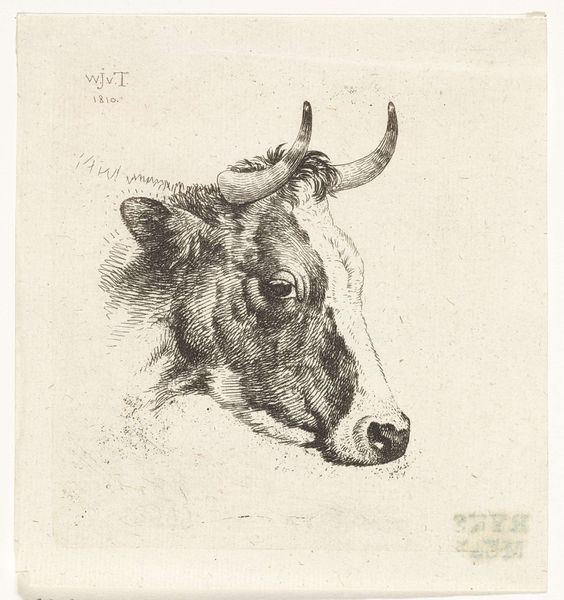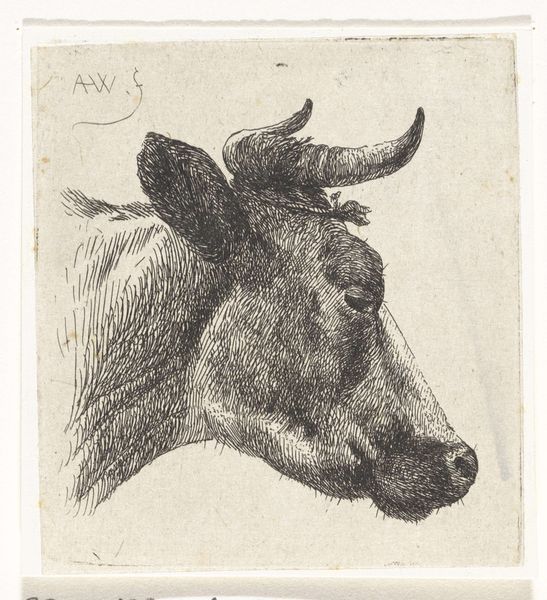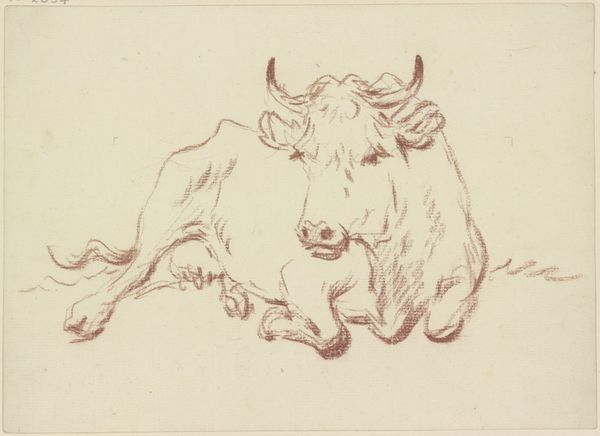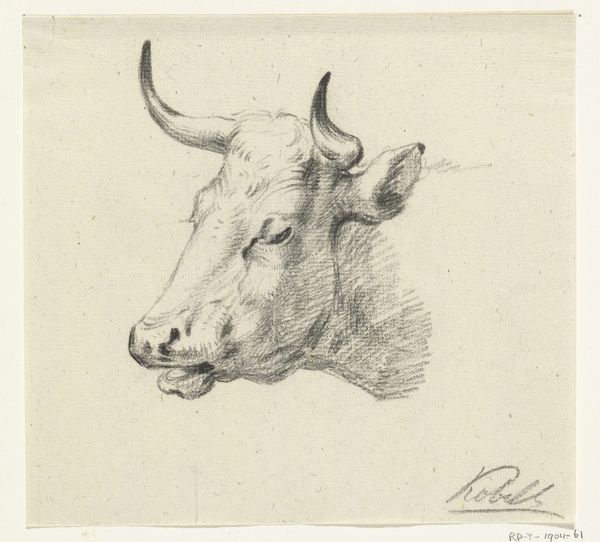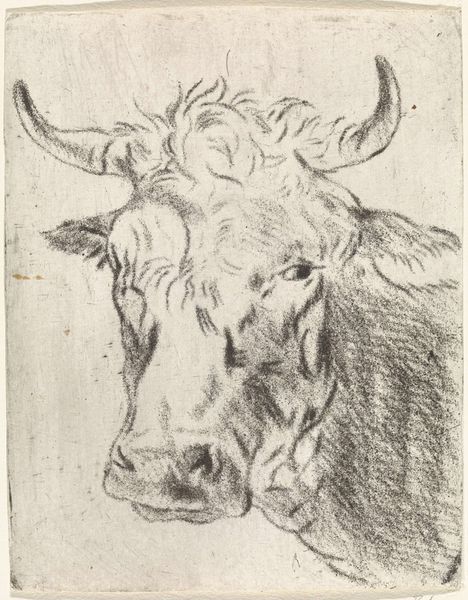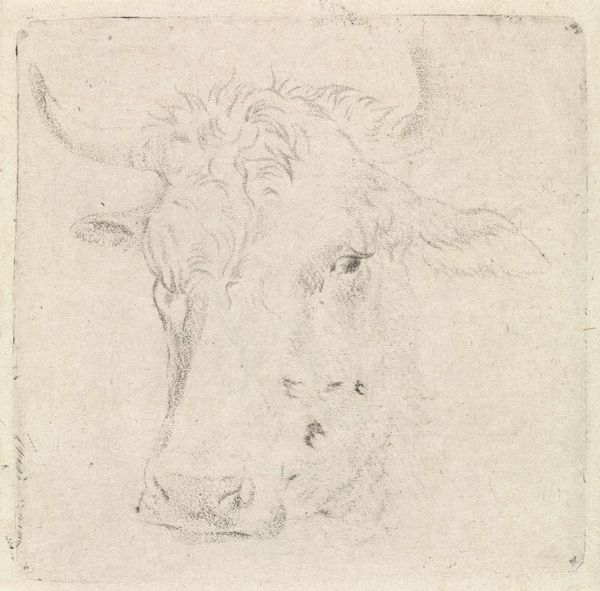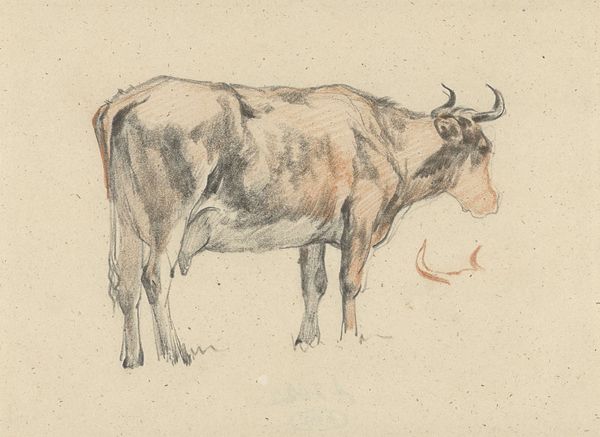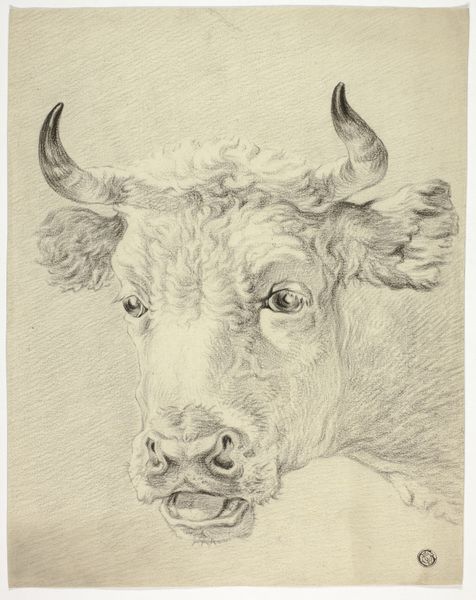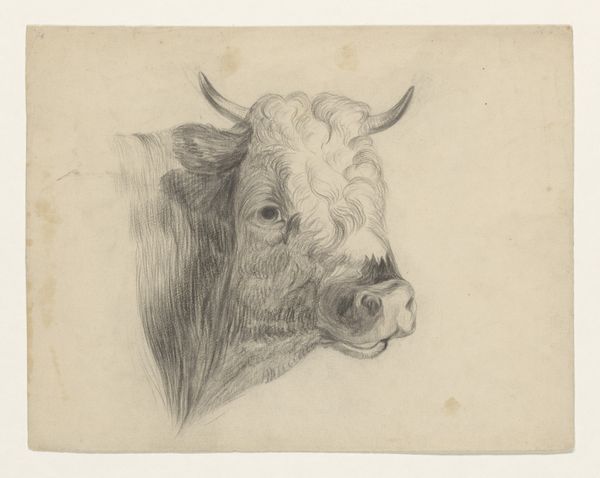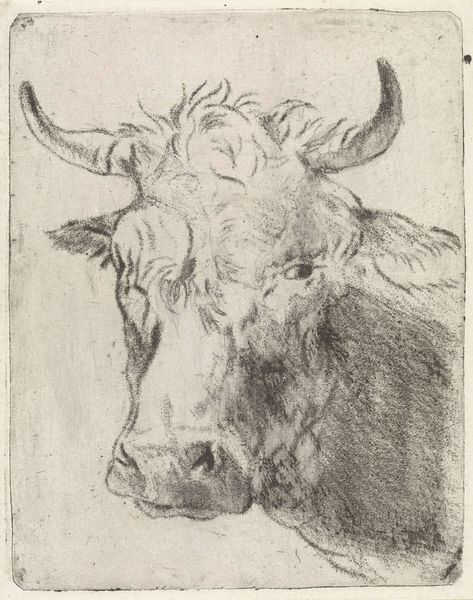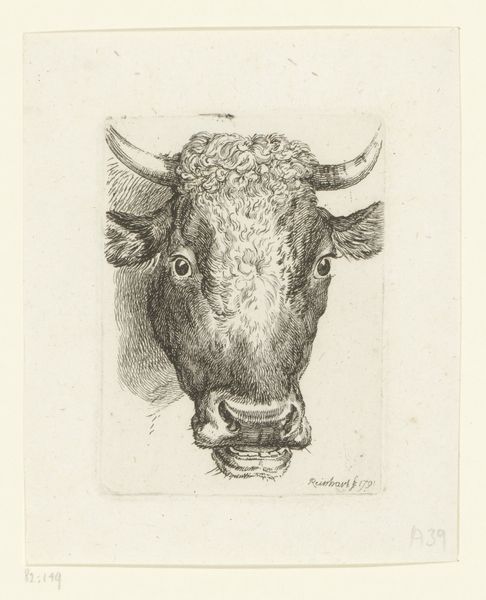
drawing, pencil
#
drawing
#
landscape
#
pencil drawing
#
pencil
#
realism
Dimensions: height 181 mm, width 172 mm
Copyright: Rijks Museum: Open Domain
Curator: Before us, we have "Head of a Cow," a drawing created by Pieter Gerardus van Os between 1786 and 1839. The medium here is quite simple – pencil on paper. Editor: The simplicity works. There's something immediately striking about the intense detail he achieves. The layering of pencil strokes creates a very tangible texture. You can almost feel the rough hair of the cow. Curator: Precisely. The artist’s skill lies in conveying form and volume through subtle variations in tone and line density. We need to look at it beyond being a simple 'animal portrait.' It tells us a great deal about the artistic production of animal imagery at the time. Animals became objects of study. Editor: From a purely formal perspective, I'm fascinated by how he captures the light. Notice how the artist uses hatching to model the form, with denser marks indicating areas in shadow and lighter, more spaced-out strokes suggesting highlights. Curator: It raises questions about agrarian life and the rising importance of livestock during that period. Did van Os engage with new approaches to breeding? To agriculture? Editor: Possibly. However, the composition, placing the cow's head front and center, isolated against the blank paper, emphasizes its sculptural qualities. He clearly understood the structure of the animal’s skull, capturing the nuances of its musculature and bone structure with careful precision. Curator: Van Os likely was commissioned for this. This kind of close observation served emerging scientific understanding, commodifying animal subjects for an increasingly commercial market. How does his depiction reinforce the socio-economic status that relied upon them? Editor: While that is one way to view the function, and possibly patronage of the artwork, I come back to form. The texture and form speak of weight and solidness – this wasn't just sketching, this was observation using form itself. Curator: I agree that the piece captures both its material essence, but that essence doesn’t come from nowhere – the context that formed both its creation, and its present exhibition tells its own story. Editor: Perhaps the dialogue between pure aesthetics and that cultural construction, that makes this unassuming little drawing so fascinating. Curator: Indeed. Thank you.
Comments
No comments
Be the first to comment and join the conversation on the ultimate creative platform.
